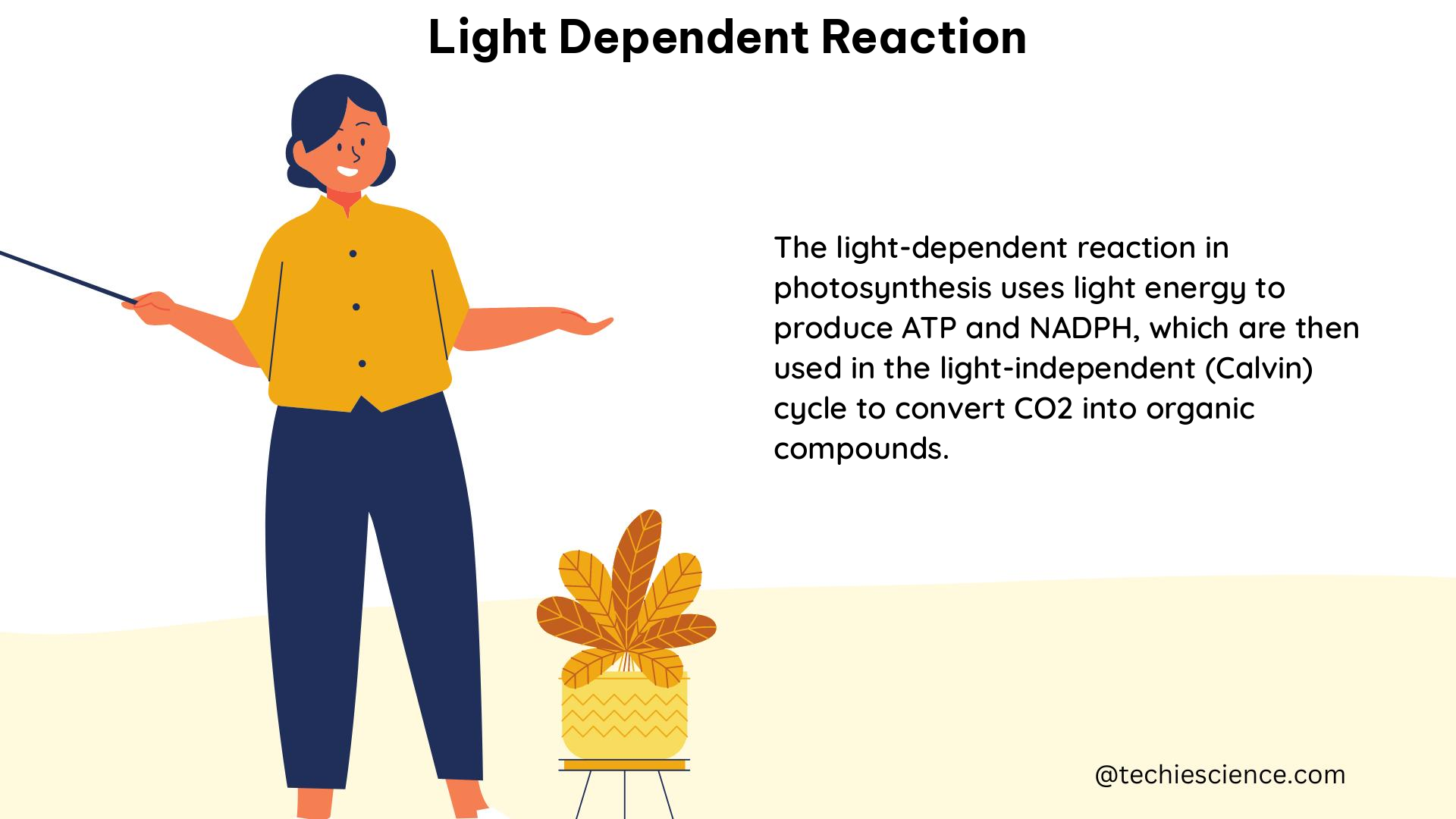The light-dependent reactions of photosynthesis are a series of complex biochemical processes that convert light energy, typically from the sun, into chemical energy in the form of ATP (adenosine triphosphate) and NADPH (nicotinamide adenine dinucleotide phosphate). These energy-rich molecules are then utilized in the subsequent light-independent reactions (Calvin cycle) to convert carbon dioxide into glucose and other organic compounds.
Understanding the Photosynthetic Apparatus
The light-dependent reactions occur within the thylakoid membrane of chloroplasts, the organelles responsible for photosynthesis in plant cells. This membrane is home to a variety of pigment molecules, including chlorophyll a and b, carotenoids, and phaeophytin, which are responsible for absorbing light energy.
When a photon of light is absorbed by one of these pigment molecules, it excites an electron within the molecule, pushing it into a higher energy state. This excited electron is then passed from one chlorophyll molecule to the next, a process known as the “energy transfer chain,” until it reaches the reaction center.
The Photosystems: PSII and PSI

The light-dependent reactions involve two distinct photosystems, Photosystem II (PSII) and Photosystem I (PSI), each with a unique role to play in the overall process.
Photosystem II (PSII)
PSII is the first photosystem encountered in the light-dependent reactions. It is responsible for the initial light-driven electron transfer, which results in the oxidation of water molecules and the release of oxygen as a byproduct. The excited electrons from PSII are then passed to the electron transport chain, where they are used to generate ATP and NADPH.
The structure of PSII consists of a reaction center surrounded by a network of antenna proteins, which funnel the absorbed light energy to the reaction center. The reaction center contains a pair of chlorophyll a molecules that can undergo oxidation upon excitation, releasing an electron in a process known as a “photoact.”
Photosystem I (PSI)
PSI is the second photosystem involved in the light-dependent reactions. It receives the energized electrons from the electron transport chain and uses them to generate additional NADPH molecules. The structure of PSI is similar to that of PSII, with a reaction center surrounded by antenna proteins.
The Electron Transport Chain
The electron transport chain is a series of redox reactions that occur between the two photosystems, PSII and PSI. This chain of reactions is responsible for the generation of ATP and NADPH, the energy-rich molecules used in the light-independent reactions.
The electron transport chain consists of a series of electron carriers, including cytochromes, iron-sulfur proteins, and quinones, which facilitate the transfer of electrons from one molecule to the next. This process is driven by the energy released from the excited electrons generated by the photosystems.
The Z-Scheme and the Light-Dependent Reactions
The overall flow of electrons and energy in the light-dependent reactions can be represented by the Z-scheme, a diagram that illustrates the various steps and the energy transformations that occur.
The Z-scheme begins with the absorption of light by PSII, which excites an electron and initiates the electron transport chain. The energized electrons are then passed through a series of redox reactions, ultimately reaching PSI, where they are used to generate NADPH. Meanwhile, the energy released during the electron transport chain is used to generate ATP through the process of chemiosmosis.
Quantitative Aspects of the Light-Dependent Reactions
The light-dependent reactions involve several quantifiable aspects, including:
- Photon Absorption: The absorption of a single photon by a chlorophyll molecule can excite one electron, which is the fundamental unit of the light-dependent reactions.
- Electron Transport: The electron transport chain involves a series of redox reactions, with each step transferring the excited electron to a higher-energy carrier. The overall energy change during this process is approximately 3.2 eV (electron volts).
- ATP Synthesis: The proton gradient generated during the electron transport chain is used to drive the synthesis of ATP through the process of chemiosmosis. The stoichiometry of this process is typically 3 ATP molecules per 2 electrons transferred.
- NADPH Formation: The final step of the light-dependent reactions involves the reduction of NADP+ to NADPH, with the energized electrons from PSI providing the necessary reducing power. The stoichiometry of this process is 1 NADPH molecule per 2 electrons transferred.
Practical Applications and DIY Experiments
To gain a hands-on understanding of the light-dependent reactions, you can create a simple model using a light source, a green leaf, and a clear container filled with water. By placing the leaf in the container and shining the light on it, you can observe the oxygen bubbles being released as a byproduct of the light-dependent reactions. Additionally, you can measure the amount of oxygen produced using a simple oxygen sensor, providing a quantitative assessment of the process.
For more detailed information and instructions on DIY experiments, you can refer to the following resources:
- Light-Dependent Reactions in Plants
- Photosynthesis Lesson Plan
- Light-Dependent Reactions of Photosynthesis
References
- Light-Dependent Reactions – an overview | ScienceDirect Topics
- The Light-Dependent Reactions of Photosynthesis – Biology
- 8.2: The Light-Dependent Reactions of Photosynthesis
- Light-dependent reactions (photosynthesis reaction) (article)

The lambdageeks.com Core SME Team is a group of experienced subject matter experts from diverse scientific and technical fields including Physics, Chemistry, Technology,Electronics & Electrical Engineering, Automotive, Mechanical Engineering. Our team collaborates to create high-quality, well-researched articles on a wide range of science and technology topics for the lambdageeks.com website.
All Our Senior SME are having more than 7 Years of experience in the respective fields . They are either Working Industry Professionals or assocaited With different Universities. Refer Our Authors Page to get to know About our Core SMEs.